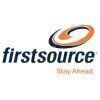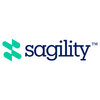
i
Infosys BPM
Filter interviews by
Infosys BPM Technical Process Specialist Interview Questions and Answers
7 Interview questions
DHCP is a network protocol that assigns IP addresses to devices, while DORA is the process DHCP uses to allocate IP addresses.
DHCP stands for Dynamic Host Configuration Protocol
DORA stands for Discover, Offer, Request, Acknowledge
Discover: Client broadcasts a DHCPDISCOVER message to find available DHCP servers
Offer: DHCP server responds with a DHCPOFFER message containing an IP address
Request: Client sends a DHCPR...
DNS stands for Domain Name System, which translates domain names to IP addresses.
DNS is like a phone book for the internet, translating human-readable domain names (like google.com) to IP addresses (like 172.217.3.206).
It helps users access websites and other online services by translating domain names into numerical IP addresses that computers can understand.
DNS also helps in load balancing, failover, and other n...
To fix a blue screen error, try restarting your computer, checking for hardware or software issues, updating drivers, and running a system restore.
Restart your computer to see if the error resolves itself
Check for hardware issues such as faulty RAM or hard drive
Check for software issues such as incompatible drivers or corrupt system files
Update drivers for your hardware components
Run a system restore to revert you...
FSMO roles are specialized roles in Active Directory that handle specific tasks for the domain.
There are 5 FSMO roles: Schema Master, Domain Naming Master, RID Master, PDC Emulator, and Infrastructure Master.
Each role has a specific function such as managing schema changes, adding or removing domains, allocating RIDs, handling password changes, and updating cross-domain references.
FSMO roles are assigned to specif...
What people are saying about Infosys BPM





Active Directory is a directory service developed by Microsoft for Windows domain networks.
Centralized database for managing network resources and users
Allows administrators to assign policies, deploy software, and apply critical updates
Enables single sign-on for users to access multiple applications and resources with one set of credentials
There are two types of IP addresses: IPv4 and IPv6.
IPv4 addresses are 32-bit numerical addresses, written in decimal format (e.g. 192.168.1.1)
IPv6 addresses are 128-bit hexadecimal addresses, written in a format like 2001:0db8:85a3:0000:0000:8a2e:0370:7334
I use a variety of technologies for work.
I primarily use Microsoft Office Suite for documentation and communication.
I also use project management tools like Jira and Trello.
For data analysis, I use Excel and SQL.
I have experience with programming languages like Python and Java.
I am familiar with cloud computing platforms like AWS and Azure.
I use collaboration tools like Slack and Zoom for remote work.
I am constant...
Infosys BPM Technical Process Specialist Interview Experiences
12 interviews found
I applied via Recruitment Consulltant and was interviewed in Jan 2024. There was 1 interview round.
(2 Questions)
- Q1. Tech question. Service desk technical tern
- Q2. What is service desk.? What was your experience
- Ans.
A service desk is a centralized point for managing IT service requests and incidents, ensuring efficient support and communication.
Acts as a single point of contact for users to report issues and request services.
Facilitates incident management by logging, categorizing, and prioritizing requests.
Provides a knowledge base for users to find solutions to common problems, reducing ticket volume.
Utilizes ticketing systems l...
(1 Question)
- Q1. Simple knowledge on Computer Architecture
I applied via Recruitment Consulltant and was interviewed before Jun 2023. There was 1 interview round.
(4 Questions)
- Q1. Type of IP addresses
- Ans.
There are two types of IP addresses: IPv4 and IPv6.
IPv4 addresses are 32-bit numerical addresses, written in decimal format (e.g. 192.168.1.1)
IPv6 addresses are 128-bit hexadecimal addresses, written in a format like 2001:0db8:85a3:0000:0000:8a2e:0370:7334
- Q2. What is DHCP and DORA process
- Ans.
DHCP is a network protocol that assigns IP addresses to devices, while DORA is the process DHCP uses to allocate IP addresses.
DHCP stands for Dynamic Host Configuration Protocol
DORA stands for Discover, Offer, Request, Acknowledge
Discover: Client broadcasts a DHCPDISCOVER message to find available DHCP servers
Offer: DHCP server responds with a DHCPOFFER message containing an IP address
Request: Client sends a DHCPREQUES...
- Q3. How to fix blue screen error
- Ans.
To fix a blue screen error, try restarting your computer, checking for hardware or software issues, updating drivers, and running a system restore.
Restart your computer to see if the error resolves itself
Check for hardware issues such as faulty RAM or hard drive
Check for software issues such as incompatible drivers or corrupt system files
Update drivers for your hardware components
Run a system restore to revert your sys...
- Q4. What is DNS ?
- Ans.
DNS stands for Domain Name System, which translates domain names to IP addresses.
DNS is like a phone book for the internet, translating human-readable domain names (like google.com) to IP addresses (like 172.217.3.206).
It helps users access websites and other online services by translating domain names into numerical IP addresses that computers can understand.
DNS also helps in load balancing, failover, and other networ...
Skills evaluated in this interview
I appeared for an interview before Feb 2024.
(2 Questions)
- Q1. Previous experience
- Q2. Organizationname and work
Interview Preparation Tips
I applied via Company Website and was interviewed before Jun 2023. There was 1 interview round.
(2 Questions)
- Q1. What is Active Directory
- Ans.
Active Directory is a directory service developed by Microsoft for Windows domain networks.
Centralized database for managing network resources and users
Allows administrators to assign policies, deploy software, and apply critical updates
Enables single sign-on for users to access multiple applications and resources with one set of credentials
- Q2. FSMO roles in Active Directory
- Ans.
FSMO roles are specialized roles in Active Directory that handle specific tasks for the domain.
There are 5 FSMO roles: Schema Master, Domain Naming Master, RID Master, PDC Emulator, and Infrastructure Master.
Each role has a specific function such as managing schema changes, adding or removing domains, allocating RIDs, handling password changes, and updating cross-domain references.
FSMO roles are assigned to specific do...
Interview Preparation Tips
- Active Directory
- MS Exchange
- MS Outlook
- O365
- SAP
Skills evaluated in this interview
I applied via Recruitment Consulltant and was interviewed in May 2022. There was 1 interview round.
(1 Question)
- Q1. Basic Technical questions regarding cloud and citrix servers.
Interview Preparation Tips
(2 Questions)
- Q1. VPN issue and troubleshooting
- Q2. SLA and incident management
(1 Question)
- Q1. Experience and Expectation salary
Interview Preparation Tips
I applied via Approached by Company and was interviewed in Mar 2022. There were 2 interview rounds.

(2 Questions)
- Q1. Tell me about work, thats it
- Q2. Technology used for work
- Ans.
I use a variety of technologies for work.
I primarily use Microsoft Office Suite for documentation and communication.
I also use project management tools like Jira and Trello.
For data analysis, I use Excel and SQL.
I have experience with programming languages like Python and Java.
I am familiar with cloud computing platforms like AWS and Azure.
I use collaboration tools like Slack and Zoom for remote work.
I am constantly le...
Interview Preparation Tips
Skills evaluated in this interview
I applied via Recruitment Consulltant and was interviewed in Jul 2022. There were 2 interview rounds.
For QA you need to have complete knowledge of QC tools and analytical skills and need to know roles and responsibilities of a QA in business
(1 Question)
- Q1. Related to documents and salary part
Interview Preparation Tips
I applied via Naukri.com and was interviewed in Apr 2022. There were 2 interview rounds.

(2 Questions)
- Q1. Normal HR questions like Introduce yourself and along with experience (if you hold any experience) if not then say fresher and if experience what was your roles & responsibility and they check your communi...
- Q2. Normal question like your name about family and work experience if fresher what you were doing and envolve in further studies what you were studying like vise versa
Interview Preparation Tips
Infosys BPM Interview FAQs
Tell us how to improve this page.
Infosys BPM Interviews By Designations
- Infosys BPM Processing Executive Interview Questions
- Infosys BPM Senior Processing Executive Interview Questions
- Infosys BPM Process Specialist Interview Questions
- Infosys BPM Accountant Interview Questions
- Infosys BPM Account Assistant Interview Questions
- Infosys BPM Business Analyst Interview Questions
- Infosys BPM System Engineer Interview Questions
- Infosys BPM Team Lead Interview Questions
- Show more
Interview Questions for Popular Designations
- Associate Interview Questions
- Senior Associate Interview Questions
- Technical Lead Interview Questions
- Associate Consultant Interview Questions
- Senior Consultant Interview Questions
- Senior Analyst Interview Questions
- Technical Support Engineer Interview Questions
- Senior Systems Engineer Interview Questions
- Show more
Overall Interview Experience Rating
based on 13 interview experiences
Difficulty level
Duration
Interview Questions from Similar Companies
Infosys BPM Technical Process Specialist Reviews and Ratings
based on 144 reviews
Rating in categories
|
Senior Processing Executive
13k
salaries
| ₹2 L/yr - ₹5.6 L/yr |
|
Process Specialist
9k
salaries
| ₹2.8 L/yr - ₹7.5 L/yr |
|
Processing Executive
5.7k
salaries
| ₹0.9 L/yr - ₹5.1 L/yr |
|
Account Assistant
4.2k
salaries
| ₹1.5 L/yr - ₹5 L/yr |
|
Accountant
3.2k
salaries
| ₹2 L/yr - ₹6.6 L/yr |

Accenture

Teleperformance

Concentrix Corporation

iEnergizer
- Home >
- Interviews >
- Infosys BPM Interview Questions















